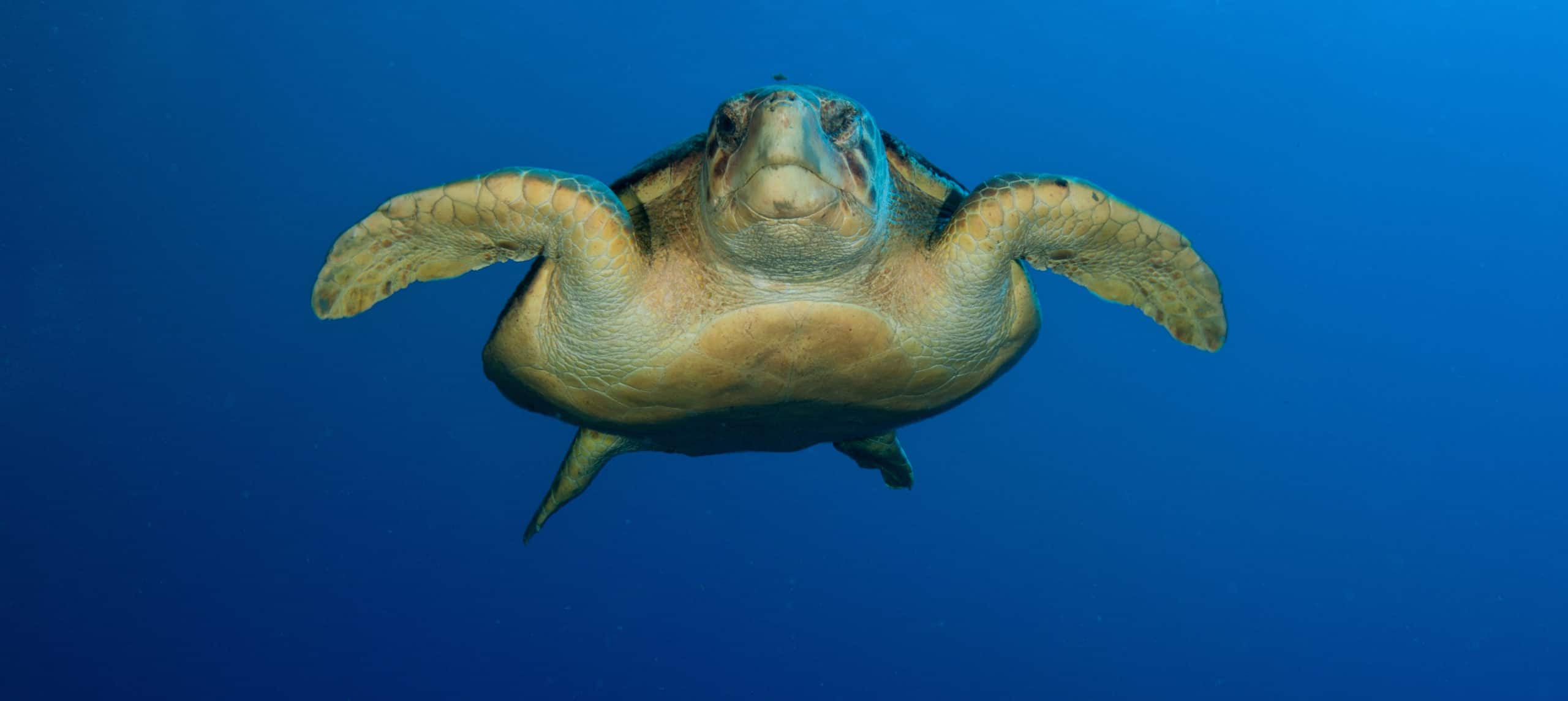Share this article
Loggerhead behavior changes during hurricanes
Nobody wishes for a hurricane, but for researchers studying loggerhead sea turtles in the Mid-Atlantic Bight — a coastal region running from Massachusetts to North Carolina — Hurricane Irene’s East Coast arrival in August 2011 was good timing. Just a couple months earlier, they had satellite tagged 26 turtles as part of a long-term study. Now, they could look for behavioral changes concurring with the hurricane.
“We were wondering if individual turtles that were in the same region, experiencing the same environmental conditions, would have similar behaviors,” said Leah Crowe, a protected species researcher and contractor for the National Oceanic and Atmospheric Administration. “Hurricanes are some of the most severe weather events, and this region has a pretty regular hurricane season.”
The satellite tags not only revealed the loggerheads’ (Caretta caretta) GPS coordinates. They could also record other information like the duration of their dives. Each year since 2009 a collaborative team from NOAA’s Northeast Fisheries Science Center and the Coonamessett Farm Foundation, funded by the Bureau of Ocean Energy Management and the Atlantic sea scallop fishery, outfit turtles with tags that record data for about 13 months. After tagging them in the early summer, the researchers were ready to see what the season might bring.
Usually hurricanes in the region come later, Crowe said. With Irene’s arrival in late-August, “the loggerheads were still within their feeding season,” she said, before migrating away in October. “This was a great chance to look back at a long term dataset and tease out this event that overlapped in time and space with where we had tagged turtles.”
Crowe led a study study published in Movement Ecology analyzing the data they collected on 18 of the sea turtles during this time. They found that when the hurricane arrived, almost all of the turtles moved north, presumably aligning themselves with the currents to save energy as the storm moved through.
After the hurricane, some turtles left their foraging areas and moved south. For those that stayed, some undertook unusually long dives to the bottom, where they forage for prey like scallops. Before the storm, almost all recorded dives lasted about 30 minutes or less. After the storm, some were staying down for over an hour. It’s hard to determine why their dives were so long, Crowe said, but they may have been due to shifts in temperature or other environmental variables, or prey distribution.
Researchers say it’s too early to say for sure that the migration changes were due to the hurricanes, but the findings open the door to further studies.
“We don’t know what the exact drivers were, but what we can say is that as the hurricane moved through, we noticed these changes and that this hurricane really disrupted the habitat in some way,” she said.
In addition to helping researchers learn more about their responses to changing environments, tagged loggerheads might be able to provide helpful weather data to scientists.
While weather buoys and satellites can gauge surface temperatures, sea turtles delve in cold pools beneath the surface, Crowe said. Before the eye of a hurricane even reaches a region, she said, warm and cold waters begin to mix due to storm forces. Tagged turtles could provide information about this mixing, which could help scientists better understand hurricane trajectories.
“We’re in the phase of working with others to use these data collected off the turtles to help improve oceanographic modeling,” she said.
Meanwhile, Crowe said understanding the impacts on loggerhead sea turtles is important for their conservation. “Things that cause ecological changes to the environment could have effects on turtle behavior, and we want to remind people from managers to scientists to stakeholders that turtles live in a very dynamic environment, and these things can affect their patterns of use.”
Header Image: During Hurricane Irene, researchers found loggerhead sea turtles changed their behaviors. Credit: NOAA








